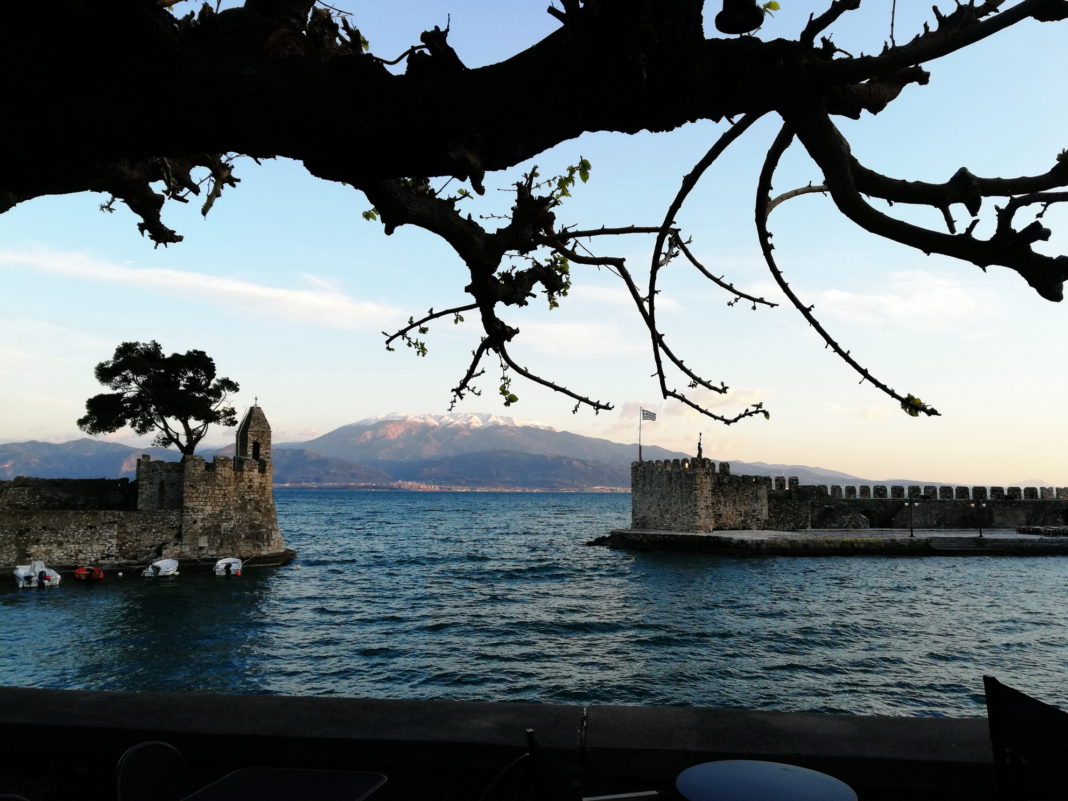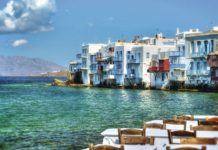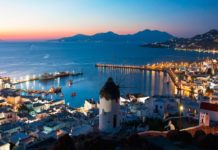Nafpaktos is majestic. Known to Greeks for having the most romantic Venetian harbor in Greece, this corner of western Greece is nonetheless pleasingly off of the path of most tourists. The setting is spectacular, even by Greek standards. Densely forested slopes hug the gulf on both sides, while snow-capped mountains tower in the near distance. The waters are a crisp deep blue, striking a refreshingly Alpine note. It’s an excellent destination for culture. And for anyone interested in the history of Greece in the Middle Ages and in the founding of Modern Greece, a visit to Nafpaktos is essential.
Nafpaktos and the surrounding region are filled with historic and cultural sites. The cuisine – fish especially – is famously fine. The beaches are lovely and pleasingly low-key. And the area is an excellent active destination, with great hikes and spectacularly scenic rafting.
Whatever your tastes, Nafpaktos makes the ideal weekend destination
Table of Contents
Nafpaktos – A Short Drive from Athens
Once you get out of the industrial suburbs of Athens and pass Elefsina, the drive to Nafpaktos is straight and scenic. The road runs along the top of the Peloponnese, right along the water’s edge, and just keeps getting prettier as you drive. The total trip is a little over two hours, and ends with a gorgeous feat of engineering.
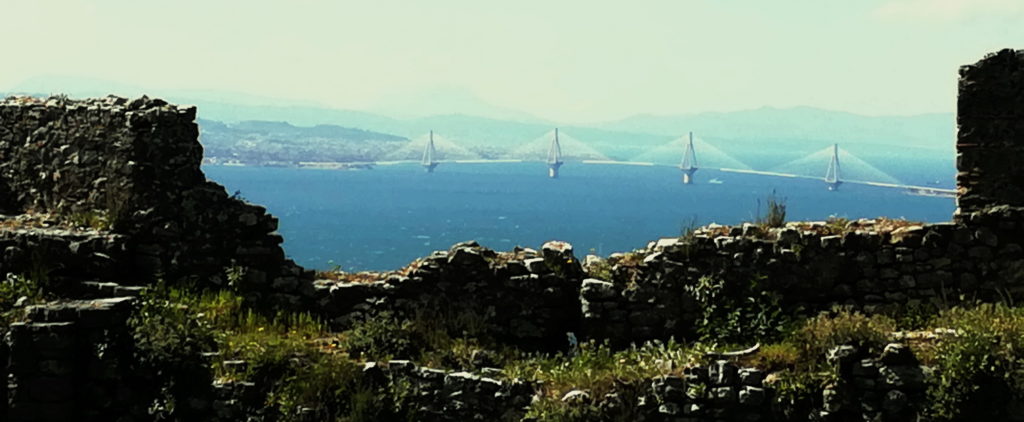
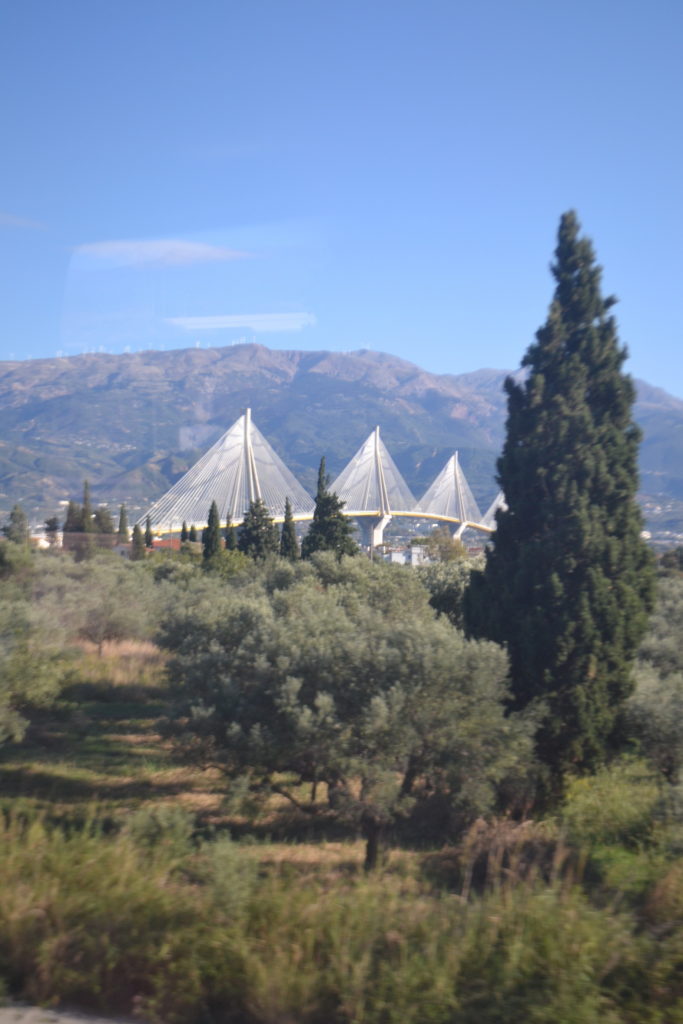
The Rio-Antirrio Bridge
The third longest cable-stayed bridges in the world, this four-towered beauty comes into sight from a great distance. The cables fanning out from the pylons look like great sails. It’s a thrill to cross, and at nearly 2.4 km, there’s time to enjoy it. Before the opening of the Rio-Antirrio Bridge in 20014, ferry service brought passengers, vehicles and freight. Ferries still cross the canal regularly.
Nafpaktos’ Beautiful Venetian Harbor
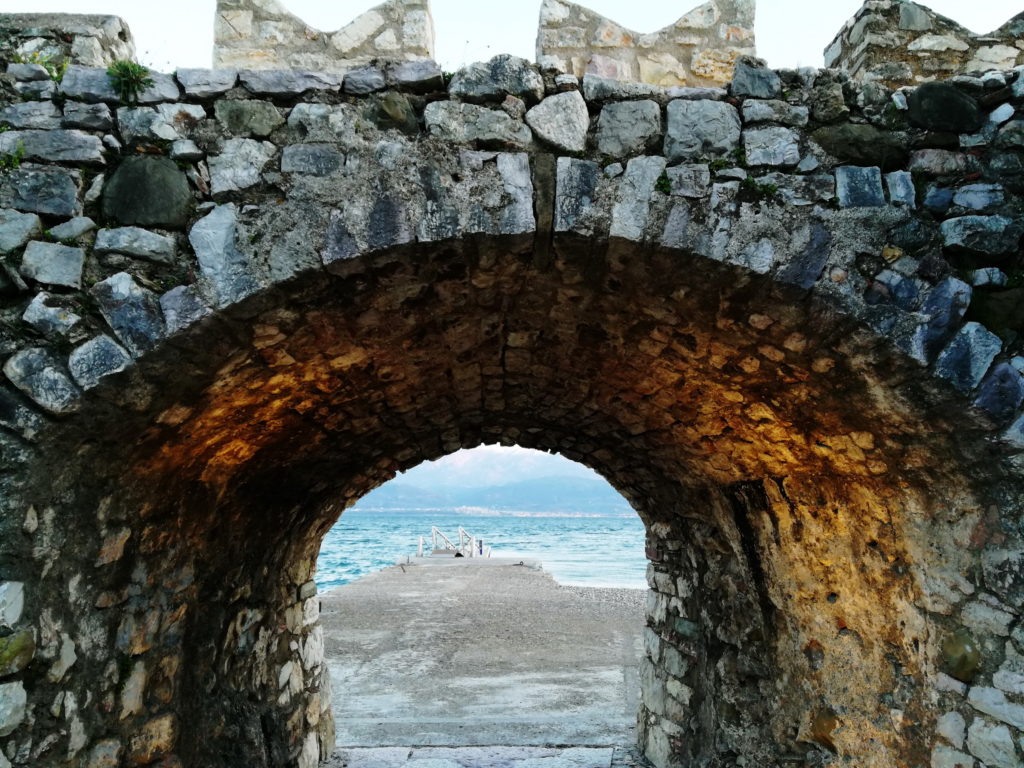
This is likely the most romantic fortified city in Greece. Its petite but glorious Venetian harbor has a distinctive horse-shoe shape, nearly enclosed by two towers with a narrow opening between them. It’s a beautiful place for a drink in the evening. Walk through the archway in the thick stone walls to a clean and peaceful pebble beach.
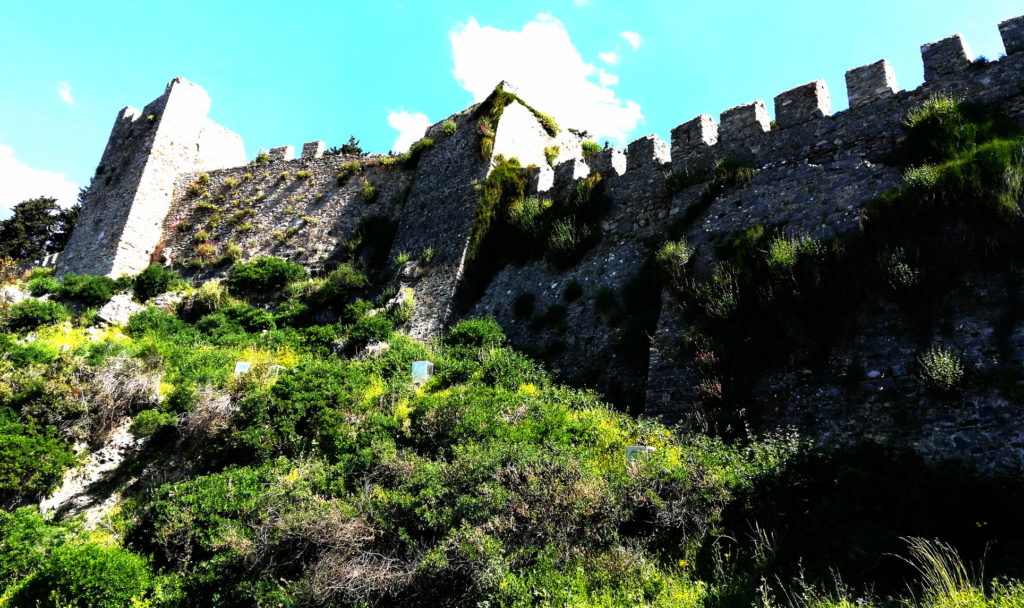
The Fortress of Nafpaktos
Nafpaktos’ fortress is really impressive. Geology helps- the steep hill rising from the harbor makes a dramatic slope for the fortress to climb. It’s also one of the largest and most intact Medieval fortresses of Greece. It begins with the harbor walls – a metal gate was once between the towers to protect the city from attack from the sea. From here, walls rise east and west. There were once four fortified transverse walls, of which portions remain. These divided the fortress into five protected zones, giving the invaders four zones to break through before reaching the inhabitants. Some of the original gates remain, and above them are chutes for pouring boiling oil onto the invading troops.
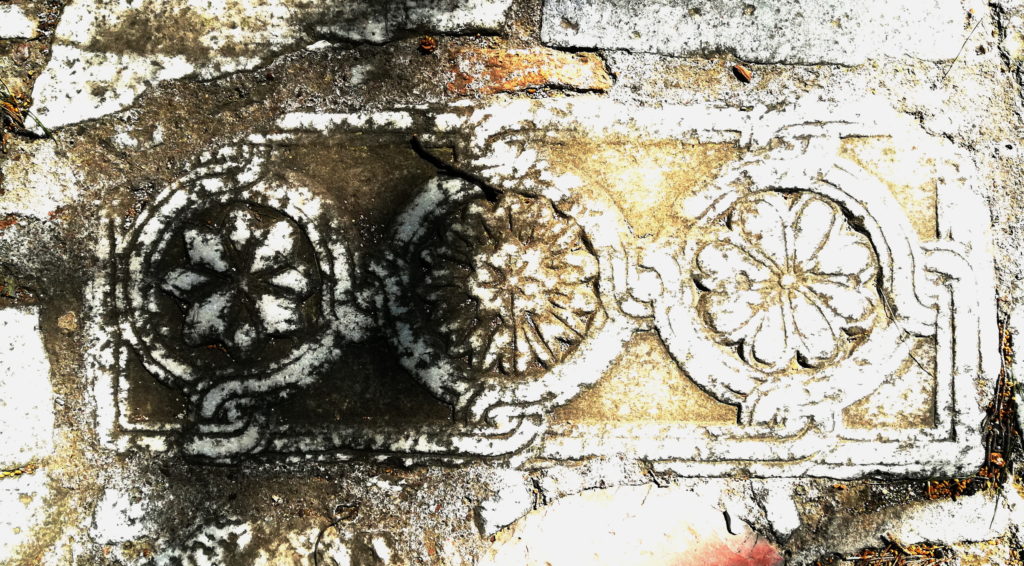
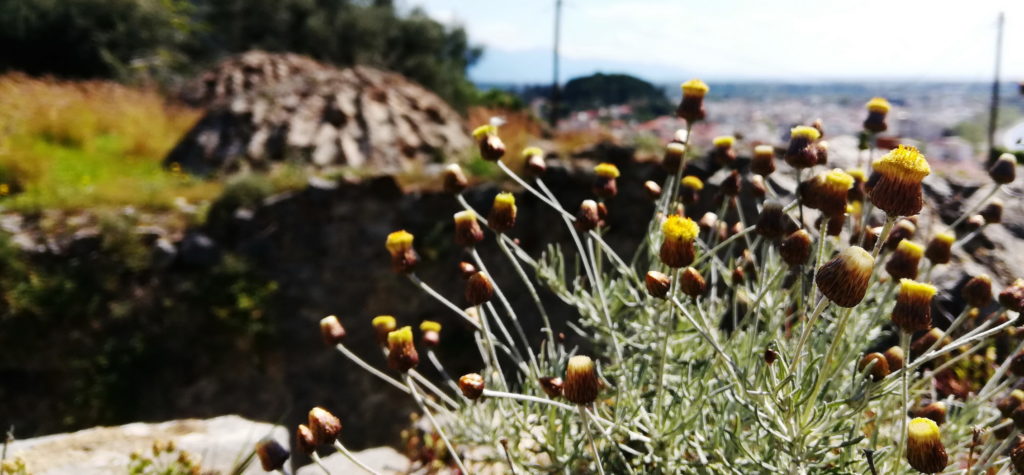
The climb to the top of the fortress makes a great urban hike along cobblestone paths and stairs, passing traditional houses and Ottoman ruins. The top of the fortress is a full 200 meters above sea level, with views to the mountains across the gulf and to the city below. The fortress has been restored,but it used to be completely wild and overgrown, and some of our local friends said this is where they would come when they skipped school, because no one’s mother would bother to come all the way up here.
The illuminated fortress by night is what has secured Nafpaktos’ reputation as one of the most romantic cities of Greece.
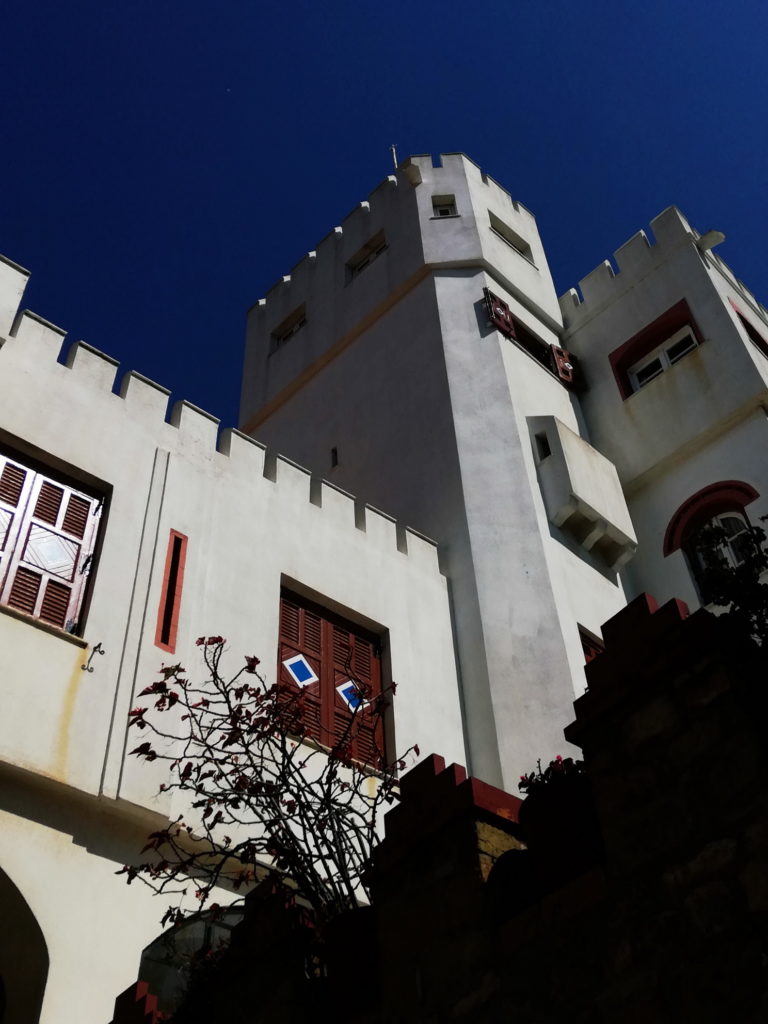
Mansions and Alleys
There is little traffic in Nafpaktos. The roads cars use are narrow, and many of the rest are paved with cobblestones. It’s a perfect city for strolling and hiking. Homes of sea captains and elegant period mansions line the streets that climb the hill. The most interesting and elegant of these is the Botsaris mansion, home of Notis Botsaris, a hero of the revolution of 1821. The mansion is a museum where you can see depictions of earlier battles and – notably – a model of a galley – an oar-propelled war ship used until the 16th century.
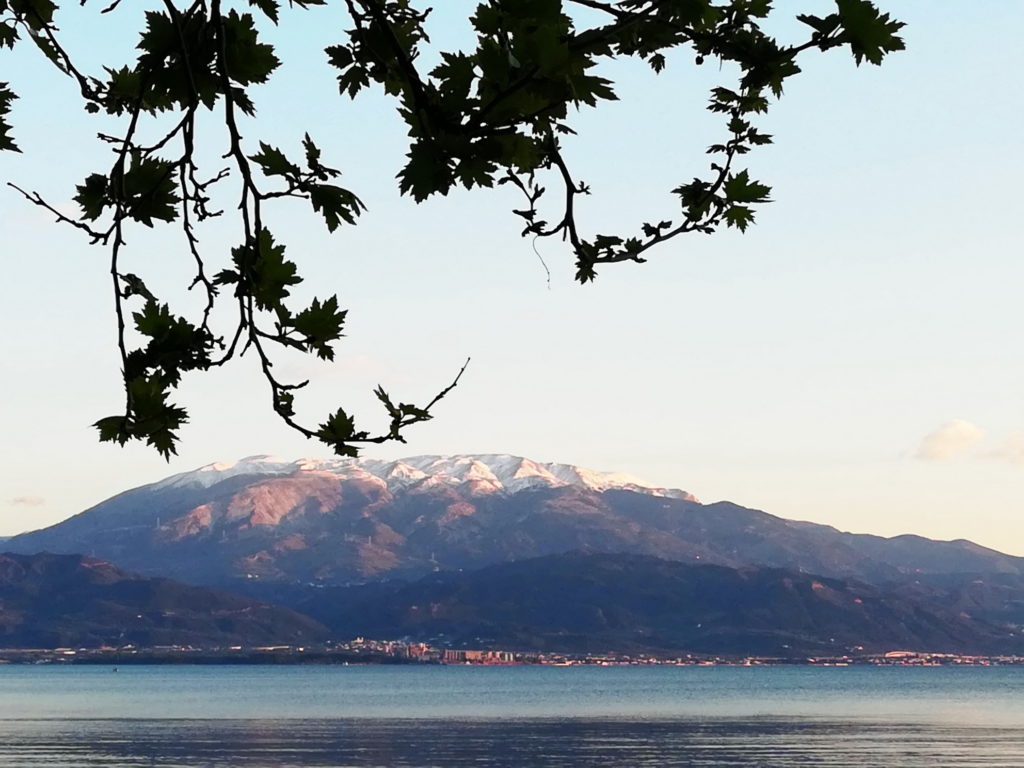
And a Tree-lined Promenade
East of the Venetian harbor is the modern part of town and it’s charming. We stayed here, at the lovely Hotel Nafpaktos, with views of the sea. Some of our party were at the Lepanto Beach Hotel, facing the promenade. A broad wooden promenade, shaded with plane trees, kines the beach. Off to the right you see the Rio-Antirrio bridge, and across the way a string of snow-capped mountains just in the other side of the gulf. There are lively cafes in the shade all along the promenade. This area, a favorite with the locals, was one of our favorite parts of Nafpaktos, too.
What’s in a Name?
The Venetian romance of Nafpaktos’ harbor is the first thing you notice, but this is also an ancient city. Because of its strategic location near the Western mouth of the Gulf of Corinth, the city experienced centuries of conflict. Everyone wanted this city – that fortress was not just for show.
In mythology, this was the place the Heraclids- the descendants of Hercules – built their ships to cross over to the Peloponnese. This is how the city got its name: “Nafs” (ναύς)- which means “ship” – and pak (πήγ) – which means to fix – therefore, its name means shipyard. It’s one of few cities in Greece that has the same name as it had in ancient times.
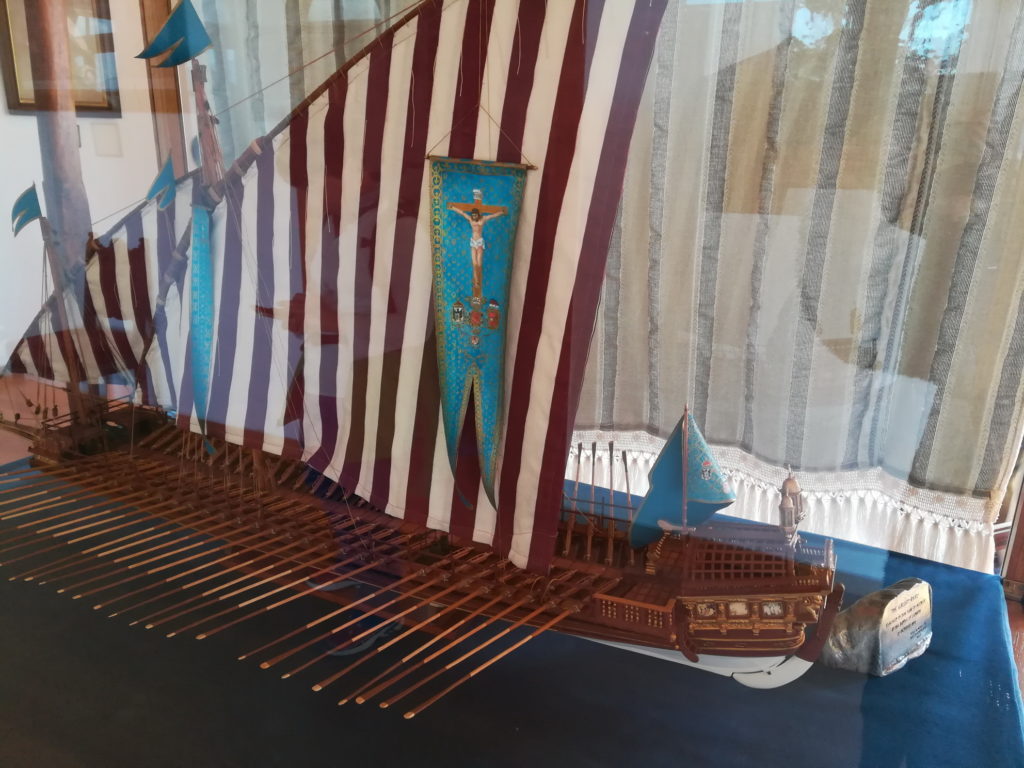
Lepanto
So what is Lepanto then? When the Franks came – “Franks” being the word for Latin foreigners – they adapted Nafpaktos in a variety of ways: Neopant, Nepant, Lepant, and finally Lepanto. The Venetians used this name. Many know of the Battle of Lepanto of 1571. This was the largest naval battle since the Antiquity. The Gulf of Corinth filled with these rowing war ships. The battle was fought between the Ottomans and the Holy League. It was a great setback for the spread of the Ottoman empire.
Places to Visit on a Weekend in Nafpaktos
The region of Nafpaktos provides a huge variety of experiences. There are more than enough activities to fill a fabulous weekend in Nafpaktos itself. But our team Travel Bloggers Greece also visited one of the most important sites in the history of the Greek War of Independence. We went rafting in the mountains on the Evinos river, tasted a priceless Greek delicacy, boated through a lagoon flat as glass by fish shacks on stilts, visited museums, ate Greek “sashimi”, and boated to an (almost) private island – Trizonia – for lunch and a hike. All these experiences were arranged for us by Go Nafpaktia. The enthusiasm is all mine.

